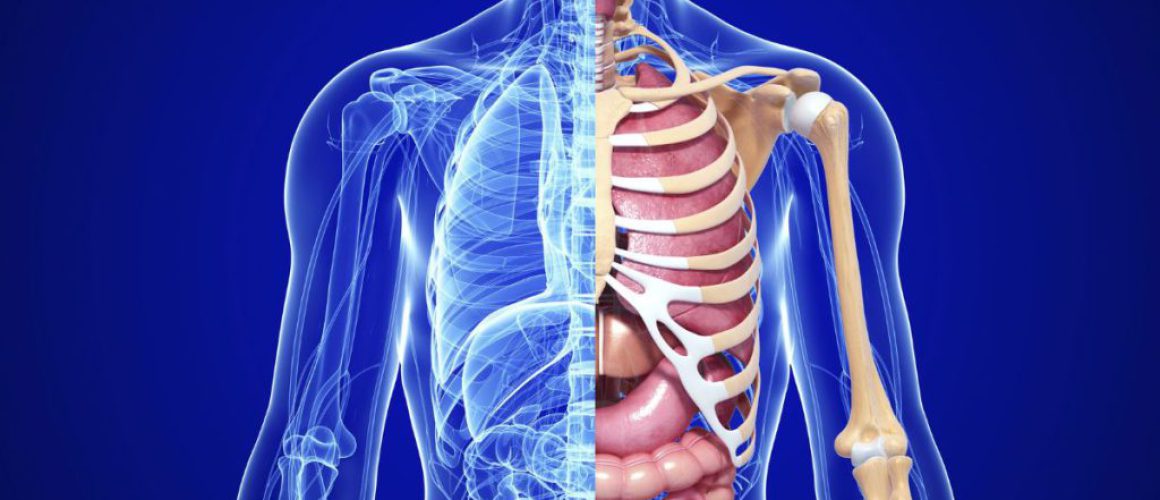The Vital Role of Anatomy in Medical Technology
Table of Contents
Disclaimer
This blog post is intended for educational purposes only. It is not a substitute for professional medical advice, diagnosis, or treatment. Always seek the advice of your physician or other qualified health provider with any questions you may have regarding a medical condition or treatment.
Introduction
Today, we’re diving deep into a topic that’s fundamental to our field, yet often overlooked in discussions about cutting-edge medical technology: the role of anatomy in medical technology. Yes, the good old study of the human body’s structure. But why is anatomy so crucial in our tech-driven field? Let’s find out!
Anatomy is not just about memorizing the names of bones and muscles. It’s about understanding the intricate structures that make up the human body and how they all work together. This understanding is the cornerstone of medical technology. It informs everything we do, from designing medical devices to interpreting medical images. So, buckle up as we explore the vital role of anatomy in medical technology!
The Foundation of Medical Technology: Human Anatomy
Anatomy is the bedrock upon which all medical sciences are built. It’s the first subject tackled in med school, and there’s a good reason for that. To develop and use medical technologies effectively, we need a thorough understanding of the human body’s intricate structures. Whether we’re designing a new medical device, planning a complex surgical procedure, or interpreting a radiological image, a solid grasp of anatomy is indispensable.
Think about it. How can we design a prosthetic limb without understanding the anatomy of the limb it’s replacing? How can we interpret an MRI scan without knowing what normal brain anatomy looks like? The answer is, we can’t. Anatomy is the language we use to understand the body, and without it, we’re flying blind.
So, while it might be tempting to focus on the latest tech developments, don’t forget about the basics. A deep understanding of anatomy is the key to unlocking the full potential of medical technology.
Medical Imaging: Seeing Inside the Body
Let’s take a closer look at one of the most direct applications of anatomy in medical technology: medical imaging. Technologies like X-ray, CT, MRI, and ultrasound all rely on our understanding of anatomical structures. These imaging technologies allow us to visualize the inner workings of the body non-invasively, aiding in diagnosis and treatment planning.
But here’s the thing: to make sense of these images, you need to know your anatomy inside out. An MRI scan might produce a detailed image of the brain, but if you don’t know your cerebellum from your cerebral cortex, that image isn’t going to be much help. That’s why radiologists spend years studying anatomy: to be able to interpret these images accurately and make accurate diagnoses.
So, the next time you’re marveling at a high-resolution MRI scan, remember the crucial role that anatomy plays in making that image meaningful.
Biomedical Engineering: Designing Better Medical Devices
Biomedical engineering is another field where anatomy plays a pivotal role. When designing medical devices, engineers need to consider the anatomical structures the device will interact with. For instance, a prosthetic limb needs to mimic the function of the lost limb, requiring a deep understanding of the limb’s anatomy and physiology. Similarly, designing an implantable device like a pacemaker requires knowledge of the heart’s structure and function.
This is where anatomy and engineering intersect. To design a prosthetic hand that can perform delicate tasks like picking up a pen or buttoning a shirt, engineers need to understand the anatomy of the hand: the bones, the muscles, the nerves. They need to understand how all these structures work together to produce movement.
The same goes for any medical device. Whether it’s a hearing aid, a pacemaker, or a surgical robot, adeep understanding of anatomy is key to its design. So, if you’re interested in biomedical engineering, make sure to hit those anatomy books!
Anatomical Models and Surgical Planning
Anatomical models have long been used in medical education. But with the advent of 3D printing technology, we can now create highly accurate, patient-specific models. These models are invaluable tools for surgical planning, allowing surgeons to visualize and plan complex procedures ahead of time. They also play a crucial role in patient education, helping patients understand their condition and the planned procedure.
Imagine you’re a surgeon preparing for a complex heart surgery. With a 3D printed model of the patient’s heart, you can see exactly where the problem is and plan your surgical approach. You can even practice the procedure on the model before stepping into the operating room. This can lead to more effective surgeries and better outcomes for patients.
And it’s not just surgeons who benefit. Patients can also gain a better understanding of their condition by looking at these models. This can help alleviate anxiety and lead to better patient engagement in their treatment.
The Future: Medical Technology Innovations
As we look to the future, the role of anatomy in medical technology is set to grow even more significant. Innovations like virtual reality and augmented reality are revolutionizing medical education and surgical planning. These technologies allow for immersive, interactive exploration of anatomical structures, providing a whole new way to learn and understand anatomy.
Imagine donning a VR headset and being able to explore the human body from the inside. You could walk through the chambers of the heart, explore the brain’s intricate network of neurons, or get a close-up view of the inner ear. This kind of immersive learning experience could revolutionize anatomy education, making it more engaging and effective.
And it’s not just about education. VR and AR can also be used for surgical planning, allowing surgeons to explore a patient’s anatomy in 3D before they make a single incision. This could lead to more precise surgeries and better patient outcomes.
Conclusion
Anatomy might seem like an old-school subject in our high-tech world, but it’s as relevant as ever. Whether you’re interpreting a complex radiological image, designing a new medical device, or planning a tricky surgical procedure, a solid understanding of anatomy is key. So keep hitting those anatomy books, med tech enthusiasts!
Remember, medical technology isn’t just about the latest gadgets and gizmos. It’s about using technology to improve health and save lives. And to do that effectively, we need a deep understanding of the human body. So, while it’s important to keep up with the latest tech developments, don’t forget about the basics. Anatomy isn’t just a subject you study in med school. It’s a lifelong learning journey that’s crucial to our work in medical technology.
Frequently Asked Questions
What is the role of anatomy in medical technology?
Anatomy, the study of the structure of the human body, is fundamental to medical technology. It’s crucial for understanding how to develop and use medical technologies effectively. Whether it’s designing a new medical device, planning a complex surgical procedure, or interpreting a radiological image, a solid grasp of anatomy is indispensable.
How does anatomy contribute to medical imaging?
Anatomy plays a significant role in medical imaging. Technologies like X-ray, CT, MRI, and ultrasound all rely on our understanding of anatomical structures. These imaging technologies allow us to visualize the inner workings of the body non-invasively, aiding in diagnosis and treatment planning. But to make sense of these images, you need to know your anatomy inside out!
Why is anatomy important in biomedical engineering?
In biomedical engineering, understanding anatomy is crucial when designing medical devices. Engineers need to consider the anatomical structures the device will interact with. For instance, a prosthetic limb needs to mimic the function of the lost limb, requiring a deep understanding of the limb’s anatomy and physiology. Similarly, designing an implantable device like a pacemaker requires knowledge of the heart’s structure and function.
What is the role of anatomical models in medical technology?
Anatomical models, especially those created with 3D printing technology, are invaluable tools for surgical planning and patient education. They allow surgeons to visualize and plan complex procedures ahead of time and help patients understand their condition and the planned procedure.
How will anatomy contribute to future medical technology innovations?
As we move forward, the role of anatomy in medical technology will only grow. Innovations like virtual reality and augmented reality are set to revolutionize medical education and surgical planning. These technologies allow for immersive, interactive exploration of anatomical structures, providing a whole new way to learn and understand anatomy.
Sources
- Augmented reality and physical hybrid model simulation for preoperative planning of metopic craniosynostosis surgery This study demonstrates the use of augmented reality and physical models in surgical planning, which supports the section of the blog post discussing the use of 3D printing and virtual reality in medical technology. The study found that these technologies can enhance the surgeon’s understanding of 3D anatomy and improve surgical performance.
- 3D printed airway simulators: Adding a dimension to bronchoscopy training This article discusses the use of 3D printed models in bronchoscopy training, which supports the blog post’s discussion of the use of 3D printing in medical technology. The article found that these models can provide a realistic and risk-free environment for medical students and professionals to practice procedures.
- The Role of Anatomy in Medical Education This source discusses the importance of anatomy in medical education, which supports the blog post’s discussion of the importance of anatomy in medical technology. The source argues that a deep understanding of anatomy is essential for the development of new treatment methods and the design of medical devices.
- The Role of Anatomy in the Development of Medical Imaging This source discusses the role of anatomy in the development of medical imaging technologies, which supports the blog post’s discussion of the use of anatomy in diagnostic tools. The source argues that a deep understanding of anatomy is essential for interpreting images produced by technologies like MRI and CT scans.
- The Role of Anatomy in Biomedical Engineering This source discusses the role of anatomy in biomedical engineering, which supports the blog post’s discussion of the use of anatomy in the design of medical devices. The source argues that a deep understanding of anatomy is essential for designing medical devices that interact effectively with the body.
Sean Schepers is a third-year Medical Technology student at Mahidol University with a passion for all things health and medicine. His journey into the world of medicine has led him to explore various fields. Sean's blog posts offer a unique perspective, combining his academic insights with personal experiences. When he's not studying or blogging, Sean enjoys keeping up with politics and planning his future career in medicine.
In addition to his studies, Sean serves as the chairman of the Rights, Liberties, and Welfare Committee, a role that reflects his commitment to advocacy and social justice. Beyond his academic pursuits, Sean offers tutoring services in English and Biology, further demonstrating his dedication to education and mentorship. His journey is one of continuous discovery, and he invites others to join him as he explores the dynamic and transformative world of medical technology.


